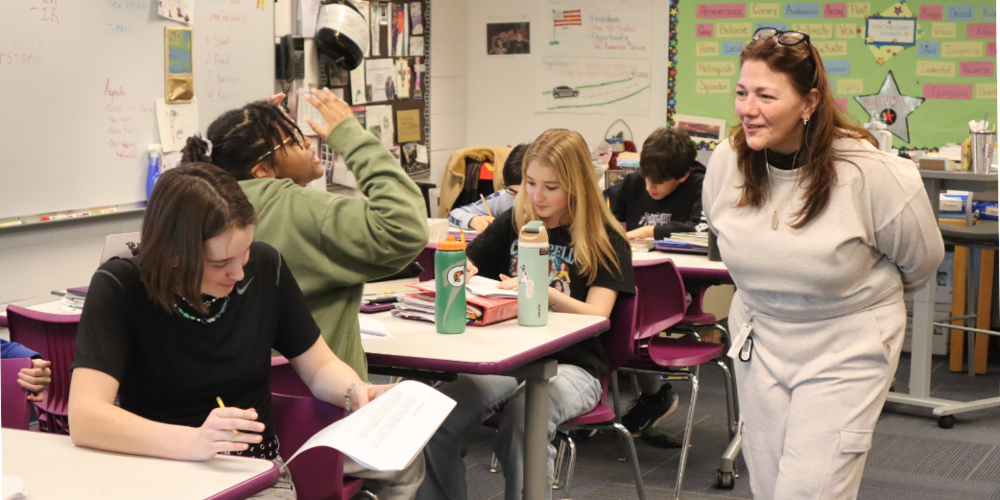The breadth of eighth-grade English language arts is reflected in Lisbeth Arce’s classroom. Bookshelves brim with realistic and historical fiction, and forward-facing containers of biography and memoir. There’s a vocabulary wall, featuring words like dormant, loquacious and myriad. Today, the students are facing the class screen, which displays a paragraph from a literary essay with color-coded parts.
“Knowing how to compose an effective paragraph is important in all types of writing,” Arce said to the students. “Well-written paragraphs guide the reader by explaining and supporting your position. You are going to use this skill in high school and throughout your life.”
Together, the students identify the paragraph’s three parts—the claim, evidence and analysis—and analyze each one’s logic and punctuation. None of this is new material; Arce is circling back and building on skills the students have been working on all year.
Arce shares with the students that she knows, based on recent assignments, that they need to revisit crafting the analysis section of a paragraph. “I see growth,” she said, “and the need for more work.”
‘Repeat after me,” she said. “Repetition is not the same as analysis.”

“I’m going to give you a tip,” said Arce. “When you are writing the analysis part of a paragraph, use a simile or metaphor to get your point across.”
She asks the students to write a simile about the class and they have fun with the prompt. One compares her to a queen. Another likens the class to a juggling act in a circus.
“Knowledge is like food,” one student reads aloud. “I can’t stop taking it in.”

